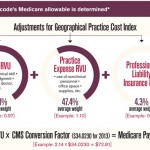To ensure adequate and appropriate reimbursement, rheumatologists must provide detailed information about their services to the people advocating on their behalf. With the proper information, advocates can then do the work necessary to secure the appropriate values for these services.
These advocates are members of the Relative Value Update Committee (RUC), a volunteer committee of the American Medical Association (AMA) that makes recommendations annually to the Centers for Medicare and Medicaid Services (CMS) on appropriate values for medical services.
RUC = Representation
The AMA established the RUC, along with the Current Procedural Terminology (CPT) Committee, to guarantee that physician services across all specialties are well represented. The CPT committee makes decisions on coding and nomenclature, then the RUC committee takes the new or revised codes and advocates for fair reimbursement on physician work based on the codes.
Currently, the RUC comprises 31 physicians and 300 medical advisors representing various specialties.
Where ACR Members Fit In
Tim Laing, MD, the current panel member representing rheumatology on the RUC, emphasizes that ACR members play a vital role in the advocacy efforts of the RUC committee.
“The RUC process is where all the codes are reviewed,” he says, emphasizing that the probability of preserving the value of an existing code or obtaining an optimal value of new codes is increased if you have membership in the RUC committee.
As such, Dr. Laing says it is important for ACR members to maintain or consider joining the AMA because only societies with 1,000 members or more are allowed to participate in the RUC and CPT committees.
Survey Completion Is Crucial
Another critical role that rheumatologists play is in completing the RUC surveys sent by the ACR staff to obtain the needed information used for valuing the codes. Generating the relative value recommendation is done using a specific survey method that was developed by the RUC. These fees are based on what is called the Resource Based Relative Value Unit System (RBRVS), a fee structure that puts a relative (versus an absolute) dollar value on physician work. The components of the RBRVS include physician work (50.9%), practice expense (44.8%) and professional liability insurance (4.3%)
The two basic components used to determine the relative value of physician work are time and intensity, says Dr. Laing. “In simple terms, how much time does it take to perform a service, and how difficult is it to perform that service?”

